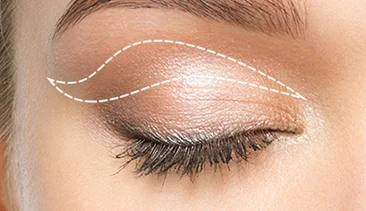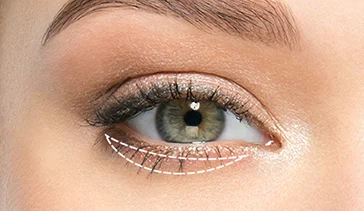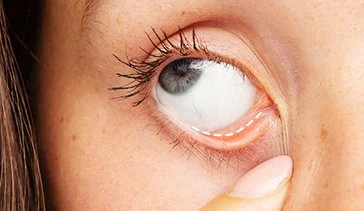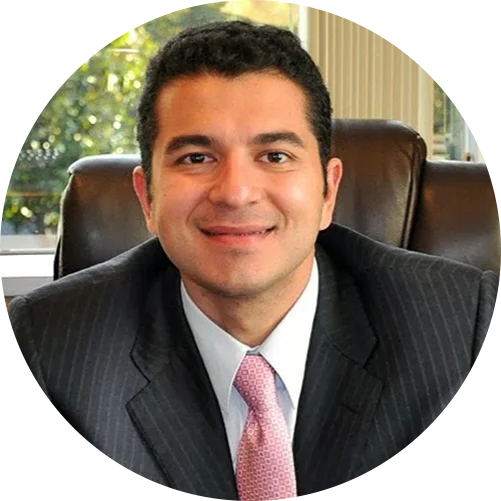How is Eyelid Surgery Performed?
After discussing your aesthetic goals in a consultation, Dr. Sepehr will create a custom treatment plan tailored to address your needs. Once Dr. Sepehr determines if intravenous sedation or general anesthesia is best for you, he will begin the procedure. In general, excess skin will be removed, fatty tissue may be repositioned, and drooping skin may be tightened or trimmed. Depending on the complexity of your procedure, it may take one to three hours from start to finish. Patients should be able to return home after the procedure. To learn the specifics of upper and lower eyelid surgery, continue reading below.

Upper Blepharoplasty
Upper blepharoplasty typically takes approximately one hour. This procedure can be performed to tighten the excess skin above the eye or correct the look of eyelid “hooding,” wherein lax eyelid tissue begins to obscure one’s field of vision. The surgery involves placing well-hidden incisions in the natural crease of the upper eyelid to make them nearly invisible after healing. Redundant skin and protruding fat are removed, and the incisions are closed with fine sutures to further minimize the visibility of the scar. Healing time is minimized by delicate surgical technique.

Lower Blepharoplasty
Our eyes are surrounded by fat which permit our eyes to move freely. This fat is kept within the eye socket by the “orbital septum,” which acts as a retaining wall. Over time, the orbital septum weakens and allows the fat to protrude, producing puffy lower eyelid bags. These lower eyelid bags often cast a shadow, leading to dark circles under the eyes.
Lower blepharoplasty typically takes one hour. Patients are candidates for one of two approaches, depending on their anatomy and their specific indication for the surgery. Incisions can be placed either inside the eyelid or through the skin on the outer surface of the eyelid. From one of these access points, bulging fat can be removed to minimize lower eyelid puffiness. Excess skin in the lower eyelids can also be treated in a variety of ways, including a little skin pinch excision, laser skin resurfacing, or chemical peels, which all cause tightening of the skin. Dr. Sepehr will carefully evaluate each patient to determine the best technique.

Transconjunctival Blepharoplasty
The transconjunctival approach is usually performed when a patient exhibits little to no excess skin in the lower eyelids and the primary goal is smoothing under-eye bags. This incision is generally suitable when skin removal is not anticipated. The procedure begins with an incision on the inside of the lower eyelid, providing an access point to smooth and remove bulging fat. Since the incision is made internally, transconjunctival blepharoplasty results in no visible scarring.


